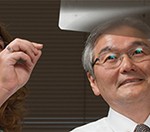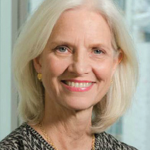This April, two of immunology’s premier investigators joined the prestigious ranks of the National Academy of Sciences (NAS). What’s remarkable about this year’s newly elected immunologists is that both are also rheumatologists. Michael B. Brenner, MD, Theodore B. Bayles professor of medicine at Harvard Medical School and chief of rheumatology, immunology, and allergy at Brigham and Women’s Hospital in Boston, and Wayne M. Yokoyama, MD, investigator at the Howard Hughes Medical Institute and Sam and Audrey Loew Levin professor of medicine, professor of pathology and immunology, and chief of rheumatology at Washington University School of Medicine in St. Louis, Mo., thus join other notable rheumatologists (see “Other NAS Rheumatologists,” below).
Election to the NAS is considered one of the highest honors accorded a scientist. The multi-stage election process begins with nomination of a scientist by an NAS member, with the NAS Council determining the number of members that can be elected each year from each of six classes (from physical and mathematical sciences to biomedical sciences) that represent all of science. Class IV, the Biomedical Sciences, comprises sections for immunology, medical genetics, hematology, and oncology; medical physiology and metabolism; and microbial biology.1 Although the NAS keeps no data on percentages of elected members by specialty, it appears that rheumatology has a healthy representation, despite the small size of the subspecialty.
The Most Fundamental Experience in Science
Although they were recognized for different discoveries in immunological research, the two investigators share common threads in their scientific development. Drs. Brenner and Yokoyama were both drawn to laboratory research following clinical fellowships; acquired extensive post-doctorate training in fundamental techniques of molecular biology and biochemistry; and were unafraid to take risks in their investigatory career paths.
Other NAS Rheumatologists
- K. Frank Austen, MD, director of the inflammation and allergic diseases research section, Brigham and Women’s Hospital in Boston
- Dennis A. Carson, MD, professor of medicine at the University of California, San Diego
- Anthony Fauci, MD, director of the National Institute of Allergy and Infectious Diseases
- Douglas T. Fearon, MD, PhD, professor of immunology at the University of Cambridge (U.K.)
- Laurie H. Glimcher, MD, professor of medicine and immunology at Harvard
- Hugh O. McDevitt, MD, professor of medicine (immunology and rheumatology), Stanford University (Calif.)
- Arthur Weiss, MD, PhD, chief of rheumatology at the University of California, San Francisco
- James B. Wyngaarden, MD, professor of medicine emeritus at Duke University in Durham, N.C. and former director of the National Institutes of Health
While a rheumatology fellow at the University of California, Los Angeles (UCLA), Dr. Brenner became fascinated by the fact that “immunological mechanisms produced such a vast array of devastating pathology.” To understand these mechanisms, he chose to do post-doctoral work in the laboratory of David Yu, MD, professor of medicine (rheumatology) at UCLA. Following that, he decided to take a hiatus from clinical medicine, and moved to Harvard to work with the famed biochemist Jack Strominger, MD, Higgins professor of biochemistry, who did much of the pioneering work on the major histocompatibility complex (MHC). Dr. Brenner recalls that he was the only MD in the Strominger lab at the time. “Many of his other trainees were wonderful scientists who taught me an approach to addressing significant questions in the field rather than conducting incremental analyses.” Immersing himself in the fundamentals of basic science, Dr. Brenner was able to define his own style of research, which was to take on problems that were technically challenging and highly risky.
For Dr. Brenner, this has been a fruitful approach. Following his discovery of a new T-cell receptor – the gamma delta T-cell receptor – he found a new pathway of antigen presentation (mediation by CD1), which activates cell immunity. Later, he discovered cadherin 11, which plays a role in the damage caused by the synovium to the joints in RA. These discoveries have been informed, he says, both by his immersion in basic science and his time in the clinic. When he was recruited (1991) and became chief of rheumatology, immunology, and allergy at Brigham and Women’s Hospital (1995), it became possible for him to combine his interest in fundamental biochemistry and molecular immunology with clinical disease, especially rheumatic diseases.
Making the Leap
When Dr. Yokoyama established his first laboratory at University of California, San Francisco, he decided to focus his investigations on the Ly49 molecule, which he first studied while working at the National Institutes of Health in the laboratory of Ethan Shevach, MD, head of the cellular immunology section at the National Institute of Allergy and Infectious Diseases. Ly49 (now known as Ly49A), originally identified on a T-cell tumor, appeared to belong to a polymorphic family of molecules and was expressed on a natural killer (NK) cell subset. At the time, says Dr. Yokoyama, he chose to deviate from other active areas, particularly investigation of T cells, to work on the NK cell. “I think a lot of people had difficulty understanding why we would do that,” he reflects. “But I was trained and exposed, in Ethan’s lab, to follow where the data take you. We wanted to figure out the function of this putative receptor. When we first began working on NK cells, almost everyone thought the cells had something to do with tumor surveillance. Yet buried in the literature were results from a number of people clearly pointing out that NK cells were important in innate immune control, particularly of viral infections.”
We, as scientists, should be doing a better job of educating the public about the way in which science is conducted. – Wayne M. Yokoyama, MD
Dr. Yokoyama acquired extensive research experience through a series of post-doctoral fellowships, first in the lab of Robert Ashman, MD, professor of rheumatology at the University of Iowa, then in Dr. Shevach’s lab at the NIH.
Part of the “aha!” moment for Dr. Yokoyama’s team occurred when they cloned the mouse NKR-P1 form and realized that the NKR-P1 and Ly49 families of molecules had a super-family type of relationship. When they then mapped the genes for NKR-P1, using the same techniques they had for the Ly49s, the team realized that the receptors were encoded in the same genomic region, now known as the NK gene complex. Dr. Yokoyama’s laboratory revealed that Ly49 receptors on NK cells were intrinsically involved in recognition of MHC Class I molecules which then turned off the NK cell, one of the first examples of inhibitory receptors on immune cells.
Dr. Yokoyama, along with Klas Karre, MD, PhD, professor of microbiology at the Karolinska Institute in Stockholm, Sweden, and Lorenzo Moretta, professor of medicine at the Università degli Studi di Genova in Genoa, Italy, was awarded the Novartis Prize for Immunology in 2001. His lab today continues with threads emanating from the Ly49 work, identifying Ly49H as the activation receptor responsible for resistance to murine cytomegalovirus (CMV) infection and the role of Ly49 inhibitory receptors in the development of NK self-tolerance.2
Dr. Yokoyama conceded that there is a certain irony about his discoveries’ indirect connection to rheumatology. “In a sense,” he says, “I divorced the scientific investigation part of my job from my clinical responsibilities. One could try to force the issue, and try to find a reason for studying NK cells in rheumatic illnesses. But I have been fortunate enough to work for Shevach, [Ira Goldstein, MD, a former ACR president], and others, whose premise was just do good scientific work and see where it takes you. It’s of course not clear if [our discoveries] will make an impact in the rheumatology clinic, but they may end up having a big impact in HIV or CMV infection. And there is some emerging data that NK cell receptors could play a role in RA, so who knows?”

A Public Service Role
Now having 2,025 members, the NAS was established in 1863 under President Abraham Lincoln. Its mission is to foster the furtherance of science and its use for the general welfare. The NAS has a powerful opportunity “to bring the most logical, scientific, and insightful appreciation to problems in a way that is honest, transparent, and not influenced by a political orientation or special interest,” says Dr. Brenner.
Dr. Yokoyama expects the challenges of NAS membership to include his concerns about scientific literacy. “As a rheumatologist, it is appalling to me how many people believe a testimonial is equal to a placebo-controlled, double-blind trial as evidence for efficacy of a drug,” he says. “We, as scientists, should be doing a better job of educating the public about the way in which science is conducted.”
Advice for Young Investigators
Asked how young rheumatologists might prepare themselves for the next generation of important discoveries, Dr. Brenner recommends they include “a very deep, intense, research-focused experience” in their training at some point. For laboratory-oriented physicians, that would include the “most fundamental research that will teach you the principles of science,” he notes. Similarly, clinical researchers should also seek out immersion in the fundamental approaches to discovery. “A very nice way to approach one’s post-doctoral training,” Dr. Brenner says, “is to make one experience very fundamental and the other more applied. Then, some combination of the two can give you a broad appreciation for disease as well as the basic scientific method to approach it in a very substantial and original way.”
Dr. Brenner tells to trainees in his program that, “It’s much more important to pick a mentor who can teach you and allow you to develop strong research methodology than it is to pick a particular topic to work on.” Indeed, young investigators might do well to follow the examples set by these two distinguished and intrepid scientists.
Gretchen Henkel is a medical journalist based in Los Osos, Calif.

